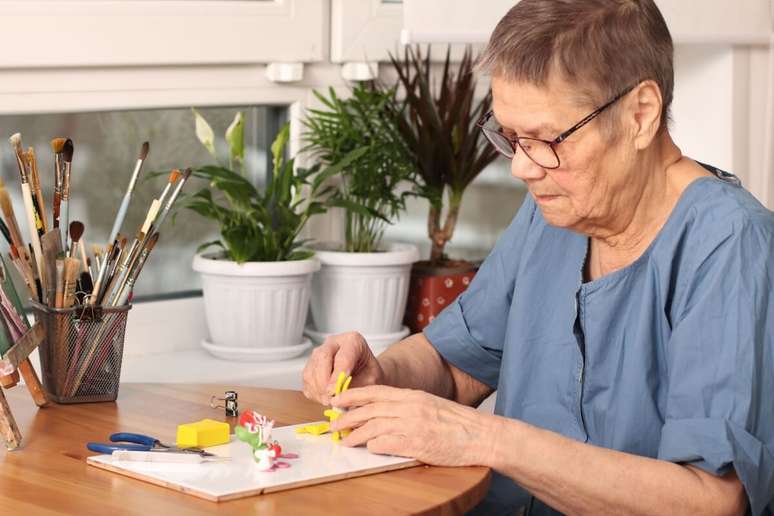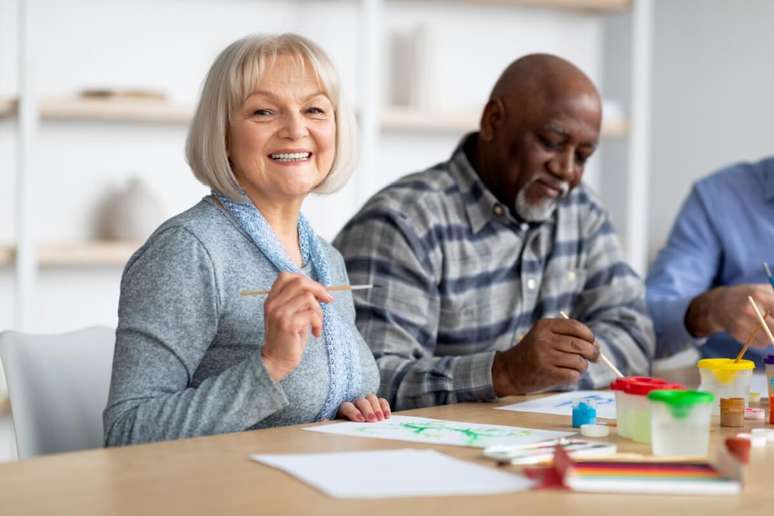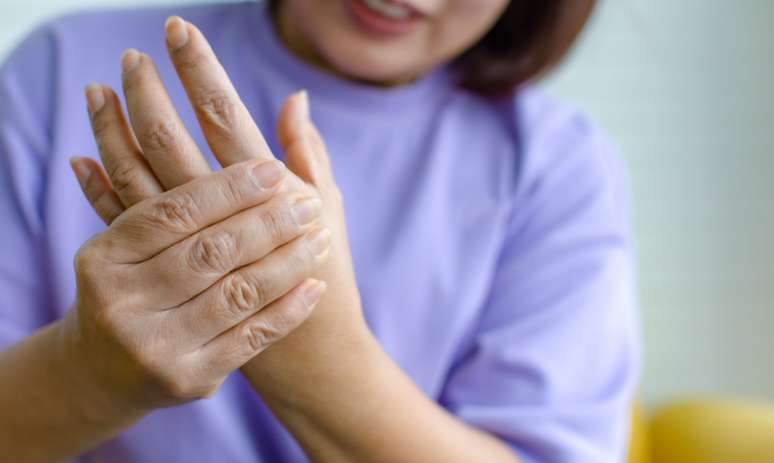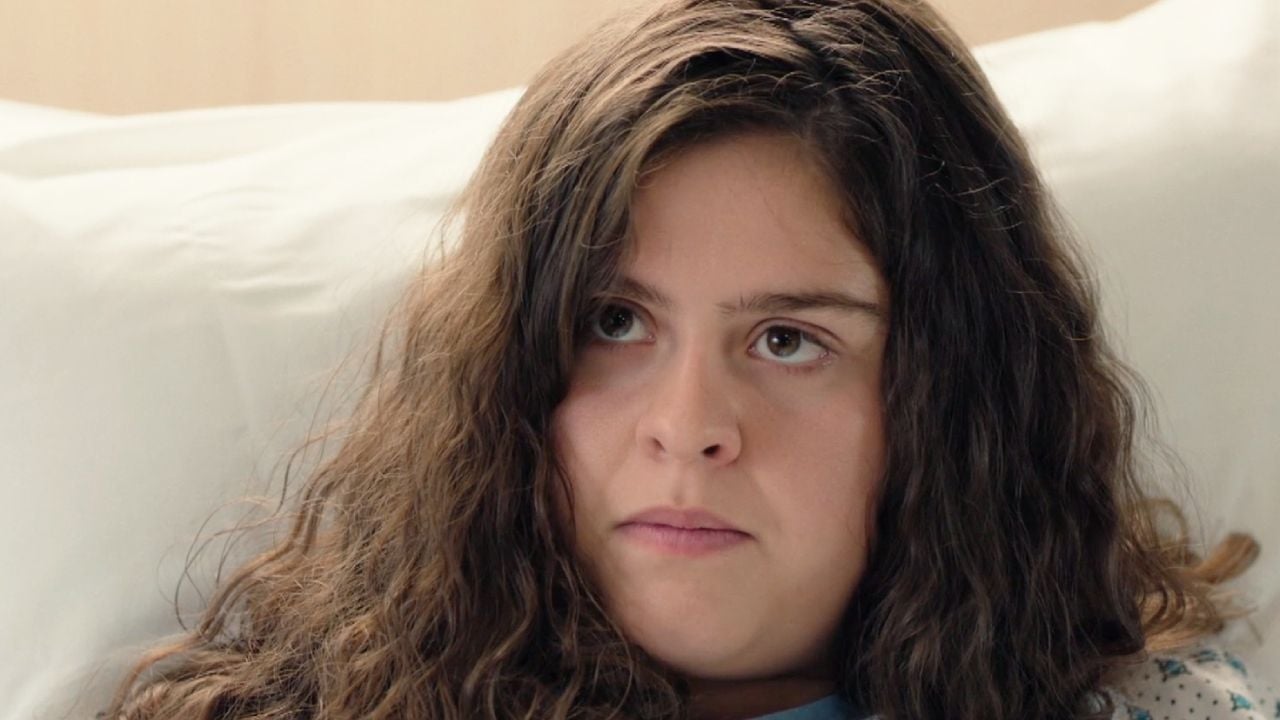Practice helps to promote the physical and mental well -being of the elderly
Aging is part of the natural cycle of life, but it can be a demanding process. According to a study by the magazine Nature Mental HealthReleased in October 2024, feeling loneliness in old age increases the risk of dementia and increases the probability of compromising the cognitive functions by 31%.
For Sheila Kruger, Senior 3I residential artistic therapist, reference in humanized and senior residential care for lucid and non -lucid elderly, artistic therapy generates multiple positive effects that promote the well -being and quality of life of the elderly.
“Over the years, it is normal for our body and our mind to face physical, emotional and cognitive challenges, especially in the elderly, when the person becomes more vulnerable. Therefore, adopting activities such as paintingCollage, sculpture and other artistic expressions in the routine of the elderly are essential, “he explains.
These activities help to promote the physical and mental well -being of the elderly. “These practices not only help to maintain the body in motion, but also to stimulate creativity, promoting self -awareness and mental well -being. Through artistic therapy, the elderly have the opportunity to strengthen emotional health, improve cognition and, above all, to maintain an active and enriching life”, says Sheila Kruger.
Artistic therapy recognized as treatment
Recognized by the World Health Organization (WHO) and the Brazilian law, artistic therapy is a type of therapeutic treatment which, because it stimulates the Car -consacity Through creative and artistic processes, it can be a form of healing. This type of therapy can be found in senior residential, hospitals, mental health clinics, among others.
“This practice is recommended for people of all ages, in particular for those who face chronic conditions or trauma. For the elderly, he plays a key role in helping to confront the transitions of old age, offering emotional support to face changes with more lightness and trust”, adds Sheila Kruger.

Art benefits for the therapy for the elderly
Under Sheila Kruger lists four benefits of the practice of artistic therapy in the daily life of elderly For decent and quality aging. Check!
1
Art is a way to demonstrate feelings. With artistic therapy, the elderly can express their emotions such as anguish, anger, frustration and depressive tendencies through drawings, paintings, sculptures, etc.
“Many people have difficulty talking about their feelings and this type of therapy presents itself as an alternative to expanding them otherwise. Although it is done through clay, collage, among others, is an escape valve for intense emotions,” explains Sheila Kruger.
2. Improvement of mental health
To practice activity Artistic can regularly provide a sense of realization and control, promoting greater self -esteem and self -knowledge. “Creative activities contribute to the reduction of negative thoughts, generating an improvement in psychological well -being, reducing the feeling of solitude and sadness. The arts can stimulate every sense and help to understand their emotions and, according to the World Health Organization (WHO), is particularly useful for mental health”, says the expert.
3. Ally in the fight against diseases
A study published by American Journal of Geriatric Psychiatry It shows that the elderly who practice cognitive activities regularly have up to 30% less likely to develop dementia. “Cognitive activities, such as Art Therapy, have distinguished themselves as allies in the prevention of diseases such as dementia, because they are exercises that stimulate the brain,” says Sheila Kruger.
4. Promotes social interaction
Like the little ones, even the elderly must maintain an active social life. Therefore, they feel included in society. Activities that promote socialization The elderly are a way to restore social connections, especially for those who feel isolated and disconnected from their families and friends.
“The Art Therapy group offers a space in which the elderly interact with each other, therefore by fighting the feeling of solitude and exclusion. Furthermore, art is a way to connect them with their stories and memories of life,” he explains.
By Gabriela Araújo
Source: Terra
Ben Stock is a lifestyle journalist and author at Gossipify. He writes about topics such as health, wellness, travel, food and home decor. He provides practical advice and inspiration to improve well-being, keeps readers up to date with latest lifestyle news and trends, known for his engaging writing style, in-depth analysis and unique perspectives.








